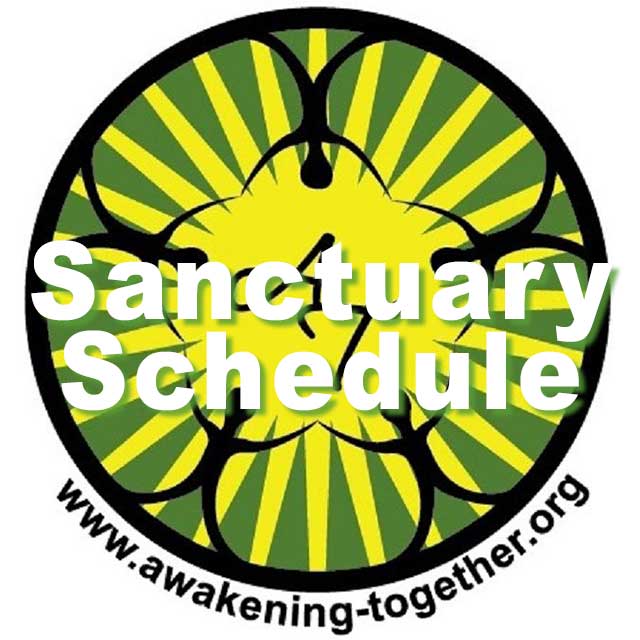How to Design a Retreat
Special Assemblies Policy and Procedure
Identify a Gap
Every new retreat should address a gap in the existing Awakening Together curriculum, which needs to be filled by a new and different curriculum.
How to Identify a Gap:
- Inner calling/inspiration
- Observe the need
- Conduct a survey
[TIP] ~ For an identified gap to qualify as the topic for a new retreat, there must also be an identified or perceived need or desire for the gap to be filled.
How to Determine if it is Your Job to Fill the Gap:
- Ask: Does filling this gap excite me?
- Ask: Does it fit with my knowledge, ability, experience, or need? Comment: It’s possible, even probable, that you’ll feel inspired to fill a gap because you are called to teach what you need to learn.
Create a Mini-Outline
Retreats are developed from high level to detailed level. This helps to ensure the retreat is well organized and includes just-right information.
The mini-outline is the first step to a well organized retreat. As you create the mini-outline, you determine how the retreat will address the gap that’s been identified. Specifically, the mini-outline includes:
- Knowledge participants will acquire
- Actions participants will learn to perform
Mini-outlines are organized into modules.
Modules are a set of standardized parts or independent units that can be used to construct a more complex structure. Each module has a distinct purpose or objective. Modules may also be time-based, such as Day 1, Day 2, etc.
Example Mini-Outline
How To Develop a Retreat, Mini-Outline
Week One: Objectives & Description
- Special Assembly Policy
- Identify a Gap
- Create a Mini-Outline
- Write the Retreat Description
- Create a work schedule
Week Two: Create a Retreat Outline
- Flesh Out the Mini-Outline
- Include Activities
- Review & Edit
Week Three: Develop a Draft Facilitator’s Guide
- Color Scheme & Standards
- Flesh Out the Retreat Outline
- Overview & Closure
- Teaching techniques
Week Four: Review the Draft Facilitator’s Guide
- Review the Facilitator’s Guide
- Time estimates
- Edit
Week Five: Develop a Participant Guide & Finalize the Facilitator’s Guide
- Create the Participant Guide
- Finalize the Facilitator’s Guide
Week Six: Validate and Edit
- Teach it
- Edit the guides based on what you learned
Write the Retreat Description
Create a Memorable Title
The title should give participants a clear idea regarding what the retreat is about. You can also use the title to indicate if it’s an introductory or advanced-level retreat. For example, if the purpose of the retreat is to teach beginners to meditate, you might call it “Meditation for Beginners.” If it is a more advanced meditation class, “Meditation: Going Deeper” might be a good title.
Five Characteristics of a Retreat Description
- Written based on the mini-outline.
- Succinct but complete, up to 150 words
- Describes the value participants will receive from the retreat
- Includes the learning objectives
- Details practical information such as time, place, cost, registration deadline, facilitator’s name. This practical information can be in addition to the original ‘up to 150 words’ and may be added later.
Example Retreat Description
An Online Workshop for Ministers: How to Design a Retreat, Thursday Evenings, [Insert Dates], 6-8pm ET – In this workshop, ministers will learn how to design and develop a spiritual retreat, class, or workshop. They will learn how to determine curriculum objectives, write a clear course description, design a well-organized outline, develop a facilitator’s guide, and create a participant workbook. Homework will be assigned and completed between sessions. Note: Non-ministers may also take this workshop with special permission from the President-Minister. Facilitated by …
Submit a Syllabus to the President Minister for Approval
A thorough syllabus includes:
- Retreat name and description
- Facilitator’s name and email
- Mini-Outline
- If not included in the outline, the number of sessions and length of each session
- Proposed schedule and venue
- List of texts/materials that will be provided & a list of texts/materials that the participant must bring to the retreat
- Any participant expectations that are not clear in the mini-outline. For example, will participants be expected to do homework between sessions; are there prerequisites; will mobile phone use & computer use be limited during the retreat, etc.
After approval, the next steps are:
Create a Retreat Outline by adding more detail to the mini-outline
Create the Facilitator’s Guide from the Retreat Outline
Review the draft Facilitator’s Guide
Create the Participant’s Workbook from the Facilitator’s Guide
Teach & Validate the Retreat
These steps are taught in the Awakening Together retreat/workshop called “How to Write a Retreat.”
Unless you are already experienced writing retreats, workshops, or some other curriculum, we recommend you become certified to teach at least two retreats before trying to write one. If you are ready to write a retreat and the “How to Write a Retreat” workshop isn’t being offered soon, consider co-developing a retreat with someone who is already experienced writing retreats. That’s another great way to learn!



